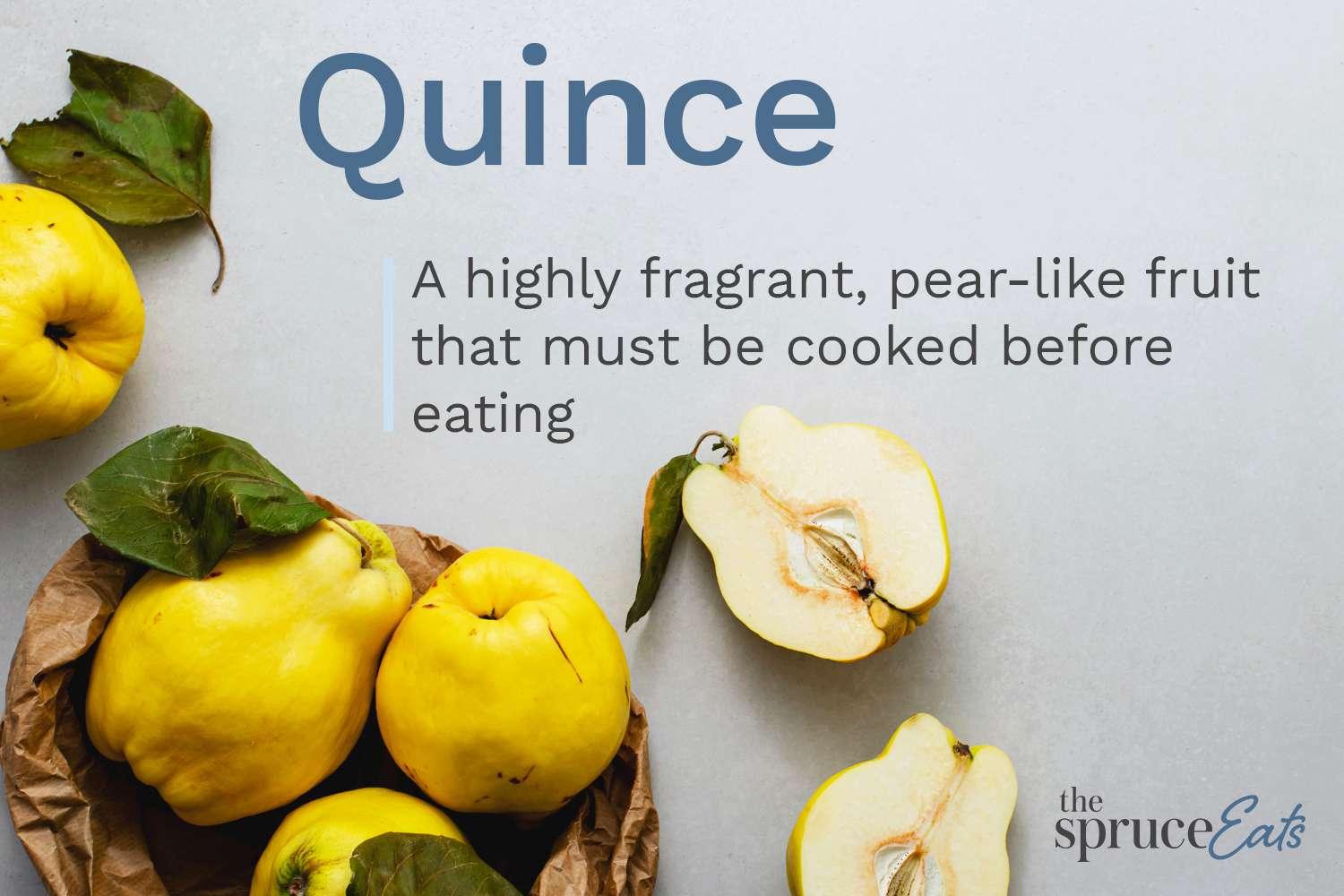Outline of the Article
- Introduction to Quince Fruit
- Understanding Quince Fruit: Characteristics and Uses
- Health Benefits of Quince Fruit
- Purchasing and Storing Quince Fruit
- Preparation Steps for Quince Fruit
- Quince Fruit Recipes: Cooking Guide
- Quince Fruit in Traditional Cuisine
- Quince Fruit: A Versatile Ingredient
- Popular Variations of Quince Fruit Dishes
- Exploring Quince Fruit Pairings
- Tips for Cooking with Quince Fruit
- Quince Fruit Dessert Ideas
- Quince Fruit in Beverages
- Incorporating Quince Fruit into Savory Dishes
- Conclusion: The Delightful Quince Fruit Journey
Article
Introduction
Quince fruit, often overlooked in modern culinary circles, holds a rich history and a plethora of culinary possibilities. With its aromatic fragrance and unique flavor profile, quince fruit offers a delightful culinary adventure for those willing to explore its potential.
Understanding Quince Fruit: Characteristics and Uses
Quince fruit, scientifically known as Cydonia oblonga, resembles a mix between an apple and a pear. Its irregular shape and fuzzy skin may not appeal at first glance, but beneath its rough exterior lies a fragrant and flavorful flesh. Typically, quince fruit is too tart and astringent to be eaten raw, but once cooked, it transforms into a delectable treat with a sweet, floral flavor.
Health Benefits of Quince Fruit
Beyond its culinary allure, quince fruit boasts an array of health benefits. Rich in fiber, vitamins, and minerals, including vitamin C and potassium, quince fruit supports digestive health, boosts immunity, and aids in maintaining healthy blood pressure levels.
Purchasing and Storing Quince Fruit
When selecting quince fruit, opt for firm, unblemished specimens with a vibrant yellow hue. Store them in a cool, dark place for up to a week or refrigerate them for extended freshness. Unlike many fruits, quince fruit improves in flavor and fragrance as it ripens.
Preparation Steps for Quince Fruit
Before incorporating quince fruit into your culinary creations, it requires proper preparation. Begin by washing the fruit thoroughly and removing any fuzz. Peel the skin, cut the fruit into quarters, and remove the seeds and core.
Quince Fruit Recipes: Cooking Guide
Quince fruit lends itself well to various culinary applications, from preserves and jams to desserts and savory dishes. Consider making quince compote, poached quince, or quince paste (membrillo). These preparations highlight the fruit's natural sweetness and aromatic qualities.
Quince Fruit in Traditional Cuisine
Across cultures, quince fruit holds a cherished place in traditional cuisine. In Mediterranean and Middle Eastern cultures, quince-based dishes are common, ranging from tagines and stews to desserts like quince tarts and pies.
Quince Fruit: A Versatile Ingredient
One of the remarkable aspects of quince fruit is its versatility in the kitchen. It can be roasted, baked, stewed, or even grilled, allowing for endless culinary experimentation. Its ability to pair well with both sweet and savory flavors makes it a chef's delight.
Popular Variations of Quince Fruit Dishes
Explore the diverse world of quince fruit dishes, from classic recipes like quince jam to modern twists such as quince and cheese pairings. Get creative in the kitchen and discover new ways to incorporate this underrated fruit into your meals.
Exploring Quince Fruit Pairings
Quince fruit's unique flavor profile opens up a world of pairing possibilities. It complements cheeses, meats, nuts, and spices, adding depth and complexity to dishes. Experiment with different flavor combinations to find your perfect match.
Tips for Cooking with Quince Fruit
When cooking with quince fruit, keep in mind its high pectin content, which makes it ideal for jams and preserves. Adjust the sugar levels according to your preference and balance the tartness with sweeteners like honey or maple syrup.
Quince Fruit Dessert Ideas
Indulge your sweet tooth with decadent quince fruit desserts, such as quince crumble, tart, or cake. Enhance the flavor with aromatic spices like cinnamon, cloves, and star anise for a truly memorable culinary experience.
Quince Fruit in Beverages
Quince fruit's essence can also elevate your beverage game. Use it to infuse cocktails, teas, or homemade sodas with its distinct flavor and aroma. Quince-infused beverages offer a refreshing twist on traditional drinks.
Incorporating Quince Fruit into Savory Dishes
Don't limit quince fruit to the realm of sweets; it shines in savory dishes as well. Add it to braised meats, roast it with vegetables, or incorporate it into chutneys and sauces for a unique flavor profile that will impress your dinner guests.
Conclusion: The Delightful Quince Fruit Journey
In conclusion, quince fruit is a hidden gem waiting to be discovered in the culinary world. With its captivating aroma, distinct flavor, and versatility, it offers endless possibilities for creative cooking. Whether you're a seasoned chef or an adventurous home cook, quince fruit invites you on a delightful culinary journey filled with flavor and excitement.
FAQs
- Can I eat quince fruit raw?
- No, quince fruit is too tart and astringent to be eaten raw. It's best enjoyed cooked or processed into various culinary creations.
- How do I know when quince fruit is ripe?
- Ripe quince fruit will have a vibrant yellow color and yield slightly to gentle pressure. It will also emit a fragrant aroma when ripe.
- What are some common flavor pairings for quince fruit?
- Quince fruit pairs well with cheeses, meats, nuts, spices, and aromatic herbs like thyme and rosemary.
- Can I freeze quince fruit?
- Yes, you can freeze quince fruit for future use. Simply peel, core, and slice the fruit before freezing it in an airtight container.
- Are there any medicinal properties associated with quince fruit?
- Quince fruit is rich in antioxidants, fiber, and vitamins, making it beneficial for digestive health, immune support, and maintaining overall well-being.

